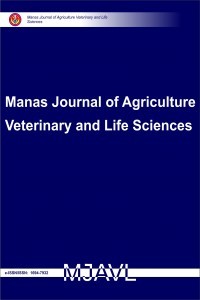Effect of Human Factor to Reallocation Phase of Land Consolidation
Land consolidation is one of the important devices provide productivity growth in agricultural production. Land reallocation is a process which is time-consuming, high execution costly and causes a lot of disagreements between landowners. In block reallocation process of land consolidation studies; after road and irrigation network is passed, plots covered by road and irrigation networks (block) are placed locationally according to claimed amounts by considering soil graduation. Regular parcels are created grafically according to shape of the blocks after this placing and given to the landowners. Reallocation and creating new parcels should be made equally and fairly between employers. Otherwise there will be rejections, farmer satisfaction will not be provided and project will not be accepted. From this point of view it can be said that block reallocation is the most sensitive and care demanding process of land consolidation. In this study, acquired results of block priority based reallocation method, which is applied by two different person, are compared. According to this comparison, effect of human factor to reallocation is studied.
Keywords:
Land consolidation, land reallocation interview based reallocation, block priority reallocation,
___
- References
- Sönmez, B., Tenth Development Plan - Study Group Report on Sustainable Usage of Agricultural Lands, Ankara (2012).
- Boztoprak, T., Demir, O., Çoruhlu, YE., Nişancı, R., Selcuk Univ. J. Eng. Sci. Tech., Vol:3, N:3, ISSN: 2147-364 (2015) (Elektronic)
- Wang,W., Zhang, Y., Land consolidation and sustainable development. China Population, Resources and Enviroment, 14 (1) (2004)13-18.
- Yun, WJ., Yang, XY., Shi, Y., Scientific defination of land consolidation. Resources and Industries, 10 (5) (2008) 1–2 (in Chinese).
- Pasakarnis, G., Maliene, V., Towards Sustainable Rural Development in Central and Eastern Europe: Applying Land Consolidation. Land Use Policy, 27 (2010) 545-549.
- Uyan, M., Determination of Agricultural soil index using geostatistical analysis and GIS on land consolidation projects: A case study in Konya/ Turkey. Computers and Electronics in Agriculture, 123 (2016) 402-409.
- Çay, T., Uyan.,M., Evaluation of reallocation criteria in land consolidation studies using the Analytic Hierarchy Process (AHP). Land Use Policy 30 (2013) 541-548.
- Li, I., Chen, Y., Gao, H., Li, D., A Hybrid Registration Approach of Remote Sensing Images for Land Consolidation. Intelligent Automation and Soft Computing, Vol:18, N:8 (2012) 1121-1132.
- Demetriou, D., Stillwell, J., See,.L., An Integrated Planning and Decision Support System (IPDSS) for Land Consolidation: Theoretical Framework and Application of the Land Distiribution Modules. Enviroment and Plannig B: Planning and Design, 39 (2010) 609-628.
- İnceyol, Y., Genetical Algorithm Application in Land Arrangement Studies. Master Thesis, Selçuk University Institute of Science and Technology, Konya (2014).
- Ayrancı, Y., Geographical Information System Supported Land Consolidation in Tokat-Yukarı Çandır Village. Master Thesis, Ankara University, Institute of Science and Technology, Ankara (1997) 117 page.
- Çevik, B., Tekinel, O., Arazi Toplulaştırması. Çukurova Üniversitesi Ziraat Fakültesi Ders Kitabı, Adana, (1989)
- Banger, G., Şişman, A., Applying Operations Research Techniques in Rural Area Land Consolidations. The Magazine of Map and Cadastral Engineering, Ankara, 87 (2001) 82-98.
- Çay, T., Land Management and Regulations. Dizgi Ofset, Konya-Turkey (2013) 342 pages
- ISSN: 1694-7932
- Yayın Aralığı: Yılda 2 Sayı
- Başlangıç: 2013
- Yayıncı: KIRGIZİSTAN-TÜRKİYE MANAS ÜNİVERSİTESİ
Sayıdaki Diğer Makaleler
Ertan Sait KURTAR, Musa SEYMEN, Önder TÜRKMEN, Mustafa PAKSOY
Ünal KAL, Önder TÜRKMEN, Erdoğan Eşref HAKKI
Necdet AKGÜN, Tamer MARAKOGLU, Kazim CARMAN
Hüseyin NAMAL, Selcan EROĞLU, Levent KESKİN, Önder TÜRKMEN
Ömür DÜNDAR, Hatice DEMİRCİOĞLU, Okan ÖZKAYA
Necibe KAYAK, Önder TÜRKMEN, Ali Tevfik UNCU, Yeşim DAL
Tair Esenali UULU, Hüseyin ÖĞÜT, Tamer MARAKOĞLU
